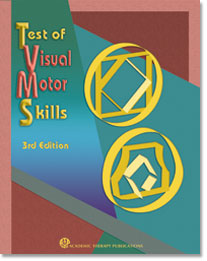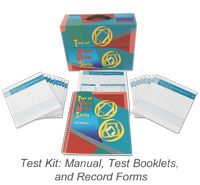Description
This revision of the TVMS assesses how well a person can coordinate visually guided fine-motor movements to copy a design while it is in sight. The TVMS-3 is used to determine whether there are any systematic distortions or gross inaccuracies in the copied design that could be the result of deficits in visual perception, motor planning, and/or execution.
New to this revision:
A simplified scoring system (no ruler or protractor needed!)Lower and upper levels have been combinedNo alternate scoring methodNational normsAge-range extended to 90+
Administration and Scoring
The TVMS-3 is untimed; it can be administered completely in about 25 minutes. The test-taker is given a booklet containing a series of 39 geometric designs of increasing complexity. The individual is asked to reproduce each design as closely as possible but may not sketch or trace the designs, nor attempt more than one copy for each design.
Results are expressed as a general accuracy standard score and an analysis of errors seen in the copied design. The manual contains detailed descriptions and exemplars of actual test results obtained during the norming study, showing the error types and scoring guidelines. The scoring sheet has a built-in guide to the types of errors possible on each design.
Nine types of errors are identified:
Incorrect ClosuresIncorrect AnglesLine QualityLine LengthsLine ConnectionsModification of Size or PartAddition or Deletion of a PartRotation or ReversalShape Overlap Error
Analysis of the types of errors made provides a detailed evaluation of visual-motor skills. Results can be reported as standard scores, percentile ranks, or age equivalents. When used along with a test of visual perception, the tests can differentiate between a primarily visual-motor impairment and a perceptual difficulty.
The TVMS-3 Scoring Tutorial (provided in the manual) details the scoring process using annotated exemplars for all error types and includes practice exercises. 
